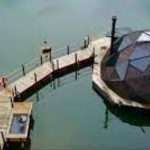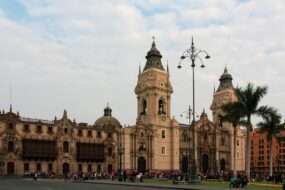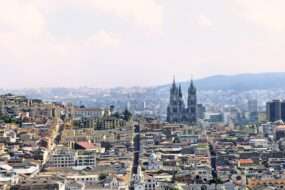
Welcome to Buenos Aires, the captivating city often referred to as the “Paris of the South.” In this article, we will take you on a journey through the rich history, vibrant culture, and enticing attractions of this remarkable destination. From the grand Teatro Colón to the iconic Casa Rosada, the historic Recoleta Cemetery to the colorful neighborhood of La Boca, and the charming streets of San Telmo, Buenos Aires offers an unforgettable experience for travelers seeking a taste of South American charm. Join us as we explore the fascinating aspects of this enchanting city.
History of Buenos Aires
With a history that dates back to the 16th century, Buenos Aires has evolved into a city of diverse influences. Originally founded as a Spanish colony, the city witnessed a tumultuous past of colonial rule, struggles for independence, and waves of immigration. This amalgamation of cultures has shaped Buenos Aires into the vibrant and cosmopolitan metropolis it is today.
Cultural Marvels
Buenos Aires is a cultural hub, brimming with artistic expression, architectural wonders, and a pulsating nightlife. The city boasts numerous theaters, art galleries, and museums that showcase the rich cultural heritage of Argentina. One such masterpiece is the renowned Teatro Colón, a world-class opera house renowned for its acoustics and grandeur. The Colón Theater stands as a testament to the city's passion for the performing arts.
Exploring the City's Attractions
Teatro Colón
The Teatro Colón stands as an architectural marvel and a symbol of Buenos Aires' cultural significance. From its stunning façade to the opulent interiors, this theater transports visitors into a world of elegance and artistic excellence. Attending a performance at the Teatro Colón is an unforgettable experience, immersing you in the enchantment of opera, ballet, or symphony.
Casa Rosada
The iconic Casa Rosada, also known as the Pink House, is the presidential palace of Argentina. Its distinct pink hue and neoclassical architecture make it a must-visit landmark. Take a guided tour of Casa Rosada to delve into the nation's political history and admire the breathtaking views of Plaza de Mayo from its balconies.
Recoleta Cemetery
Recoleta Cemetery is not your ordinary burial ground; it is a labyrinth of art and history. As you wander through its intricate pathways, you'll come across ornate mausoleums, statues, and the final resting places of notable Argentine figures, including Eva Perón. Recoleta Cemetery is a captivating testament to the city's reverence for its past.
La Boca
The vibrant neighborhood of La Boca is a feast for the senses. Its colorful houses, tango music filling the streets, and the bustling Caminito street create an electric atmosphere. Explore the local art scene, savor traditional Argentine cuisine, and witness passionate tango performances that capture the essence of Buenos Aires' soul.
San Telmo
San Telmo, with its cobblestone streets and bohemian charm, is a neighborhood that exudes old-world charm. Its antique markets, street performers, and colonial architecture make it a favorite spot for artists and history enthusiasts. Stroll through Plaza Dorrego, the heart of San Telmo, and immerse yourself in the captivating ambiance of this captivating district.
Climate and Best Time to Visit
Buenos Aires enjoys a temperate climate, with mild winters and hot summers. The best time to visit the city is during the spring (September to November) and autumn (March to May) seasons when the temperatures are pleasant, and the city is alive with festivals and cultural events. However, Buenos Aires holds its allure throughout the year, offering something unique in every season.
Getting to Buenos Aires
Reaching Buenos Aires is convenient, with its well-connected international airport, Ezeiza International Airport (Ministro Pistarini), located approximately 35 kilometers from the city center. Several major airlines operate direct flights to Buenos Aires from various destinations around the world. Once you arrive at the airport, you can easily reach the city center by taxi, private transfer, or the public transportation system.
Food Exploration
A trip to Buenos Aires is incomplete without indulging in the city's vibrant food scene. Argentine cuisine is a delightful blend of European influences, with a particular focus on meat dishes. Sink your teeth into succulent Argentine steaks, paired with a glass of Malbec, the country's famous red wine. Don't miss the opportunity to sample traditional empanadas, provoleta cheese, and the sweet delight of dulce de leche.
Frequently Asked Questions (FAQs)
Q1: Are there any safety considerations for travelers visiting Buenos Aires?
In any major city, it is important to take certain precautions to ensure your safety. While Buenos Aires is generally a safe destination, it's advisable to be mindful of your belongings, especially in crowded areas or tourist hotspots. It's recommended to use authorized taxis or ride-sharing services, and avoid walking alone late at night in unfamiliar neighborhoods.
Q2: What is the local currency in Buenos Aires, and how can I exchange money?
The official currency of Argentina is the Argentine Peso (ARS). Currency exchange services are available at banks, exchange offices (known as “cambios”), and some hotels. It's advisable to compare exchange rates and fees before making any transactions. Major credit cards are widely accepted in most establishments, but it's always a good idea to carry some cash for smaller vendors or establishments that may not accept cards.
Q3: What are some recommended day trips from Buenos Aires?
If you have extra time during your visit to Buenos Aires, there are several fascinating day trips you can embark on. One popular option is a visit to Tigre, a town located on the Paraná Delta. Explore its charming waterways, take a boat tour, or visit the Tigre Art Museum. Another recommended day trip is a visit to the charming colonial town of Colonia del Sacramento in neighboring Uruguay, accessible by ferry from Buenos Aires.
Q4: What are the shopping opportunities in Buenos Aires?
Buenos Aires offers a wide array of shopping opportunities, ranging from high-end designer boutiques to bustling street markets. Calle Florida is a renowned shopping street in the city center, known for its variety of shops, including international brands and local retailers. Palermo Soho is a trendy neighborhood that is home to many independent boutiques and artisanal stores, offering unique fashion and design items.
Q5: What are some traditional Argentine souvenirs I can bring back home?
When it comes to souvenirs, Argentina offers a plethora of options to choose from. Some popular choices include mate gourds and bombillas (traditional drinking vessels for yerba mate), leather goods such as belts and wallets, dulce de leche (caramel spread), Argentine wines, and artisanal crafts like ponchos, ceramics, and hand-knit textiles.
Conclusion
Buenos Aires, the enchanting “Paris of the South,” awaits your exploration. Immerse yourself in the rich history, vibrant culture, and captivating attractions that make this city truly unique. From the awe-inspiring Teatro Colón to the colorful streets of La Boca, and the timeless charm of San Telmo, Buenos Aires offers an unforgettable experience for every traveler. Indulge in the city's culinary delights, immerse yourself in its artistic heritage, and let the magic of Buenos Aires capture your heart. Embark on a journey to this South American gem, and create memories that will last a lifetime.











